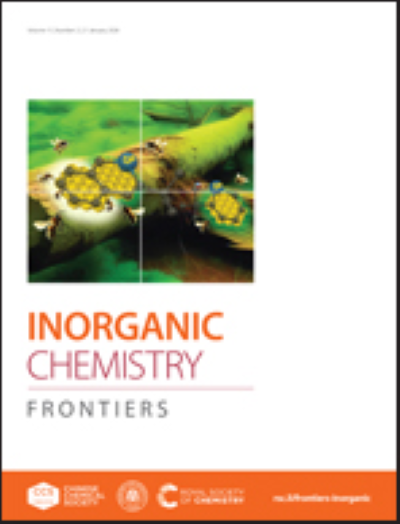脯氨酸功能化zr基金属-有机骨架的连接簇协同性及其对有机催化醛醇反应的影响
IF 6.1
1区 化学
Q1 CHEMISTRY, INORGANIC & NUCLEAR
引用次数: 0
摘要
金属有机框架(MOFs)通过模拟酶的活性位点为分子异相催化提供了独特的机会。然而,理解和控制金属节点与携带催化单元的有机连接体之间的相互作用以及由此产生的约束效应仍然具有挑战性。本文采用理论和实验相结合的方法制备了具有邻n -酰基脯氨酸功能化联苯二羧酸酯连接剂的zr - uio -67- mof,并与相应的具有区域异构体间连接剂的mof进行了比较。以对硝基苯甲醛与环己酮的有机催化醛醇反应为基准催化剂进行了研究。实验结果表明,邻位连接剂加速了醛醇反应,而区域异构体间连接剂减慢了反应速率,这是通过分子动力学模拟证明间连接剂的孔阻断来解释的。此外,在MOF制备中使用的酸调节剂也在通过竞争酸催化形成缩醛副产物中发挥了关键作用。本研究对连接剂有机催化剂与MOF金属中心之间的协同催化提供了新的见解。本文章由计算机程序翻译,如有差异,请以英文原文为准。
Linker-Cluster Cooperativity in Confinement of Proline-Functionalized Zr-Based Metal-Organic Frameworks and its Effect on the Organocatalytic Aldol Reaction
Metal organic frameworks (MOFs) provide unique opportunities for molecular heterogeneous catalysis by mimicking the active sites of enzymes. However, understanding and controlling the interaction between the metal node and the organic linker carrying the catalytic unit and the resulting confinement effects remain challenging. Here, in a combined theoretical and experimental approach Zr-UiO-67-MOFs with ortho-N-acylproline-functionalized biphenyl-dicarboxylate linkers were prepared and compared with the corresponding MOFs with regioisomeric meta-linkers. As benchmark catalysis the organocatalytic aldol reaction of p-nitrobenzaldehyde and cyclohexanone was studied. Experimental results revealed that the ortho-linker accelerated the aldol reactions, whereas the regioisomeric meta-linker decreased the reaction rate, which was rationalized by pore blocking of the meta-linker via molecular dynamics simulations. Moreover, the acid modulator used in the MOF preparation also played a critical role in the formation of acetal byproducts through competing acid catalysis. Our study provides novel insights into the cooperative catalysis between the linker-attached organocatalyst and the MOF metal center.
求助全文
通过发布文献求助,成功后即可免费获取论文全文。
去求助
来源期刊

Inorganic Chemistry Frontiers
CHEMISTRY, INORGANIC & NUCLEAR-
CiteScore
10.40
自引率
7.10%
发文量
587
审稿时长
1.2 months
期刊介绍:
The international, high quality journal for interdisciplinary research between inorganic chemistry and related subjects
 求助内容:
求助内容: 应助结果提醒方式:
应助结果提醒方式:


